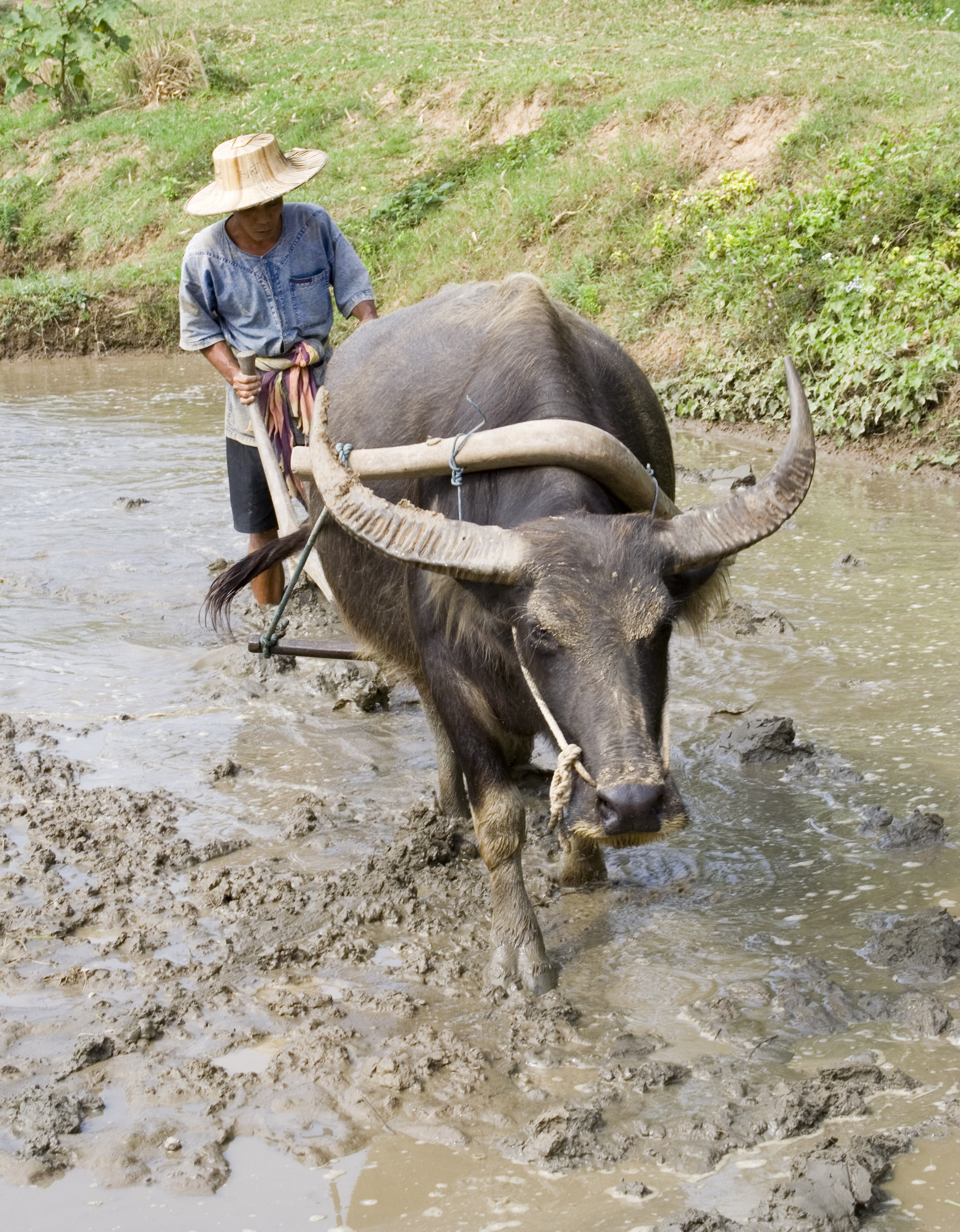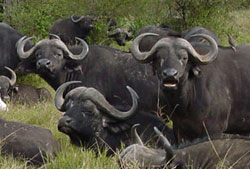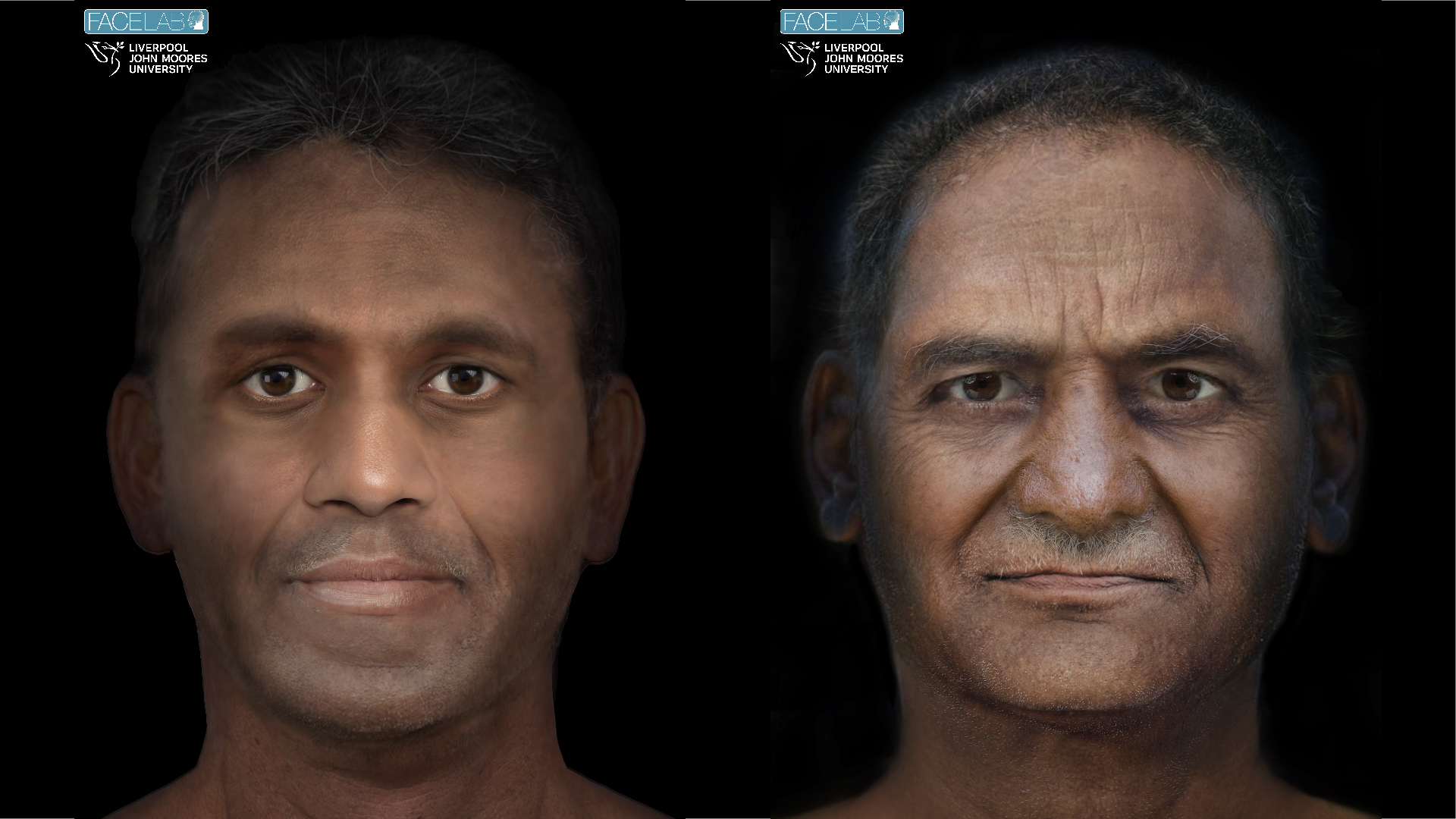Buffalo Facts | Water Buffalo & Cape Buffalo

Buffalo are large members of the Bovidae family. There are two types of buffalo: the African or Cape buffalo and the Asian water buffalo. They are dark gray or black animals that look a lot like bulls.
Buffalo are often confused with bison. Early American settlers called bison "buffalo" because the animals are similar in appearance. However, while bison are also bovines (a subfamily of bovids), they are in a different genus from true buffalo. Other bovines include domestic cattle, oxen, yaks, four-horned antelopes, bongos and kudus, according to the Integrated Taxonomic Information System (ITIS).
Size
The water buffalo is the largest bovine. It is 8 to 9 feet (2.4 to 2.7 meters) from head to rump with its tail adding an extra 2 to 3.3 feet (60 to 100 centimeters). They weigh a massive 1,500 to 2,650 lbs. (700 to 1,200 kilograms). The African buffalo is smaller, but they are still quite impressive in size. They are 4.26 to 4.92 feet long (130 to 150 cm) from head to hoof and weigh 935 to 1,910 lbs. (425 to 870 kg).
Habitat
Water buffalo live in the tropical and subtropical forests of Asia. They are aptly named, for they spend most of their time in water. Their hooves are extra wide and prevent them from sinking into mud at the bottom of ponds, swamps and rivers.
The African buffalo is never far from water. They can live in grasslands, savannas, swamps, lowland floodplains, mixed forest and glades, but they never roam farther than 12 miles (20 kilometers) from a body of water, according to the Encyclopedia Britannica. Instead of spending their days taking a swim, though, they lie under trees to keep cool while they nap. At night, they like to graze in the cool air.

Habits
Buffalo are social animals and live in groups called herds. Water buffalo herds are segregated by gender. Young males stay with the maternal herd for about three years, and then they join a male herd. Maternal herds have up to 30 females and their offspring. Male herds have up to 10 members. African buffalo herds are mostly of mixed gender. They do have a few all-male herds, but these usually consist of old males. An African herd often has more than 1,000 members.
Diet
Buffalo are herbivores, and so eat only vegetation. Their favorite foods are grass and herbs, but water buffalo will also eat aquatic plants. Both African and Asian buffalo will eat shrubs and trees when they can't find grass or herbs to eat.
Get the world’s most fascinating discoveries delivered straight to your inbox.
Offspring
Buffalo, like most mammals, bear live young, which are called calves. Usually, they have one calf at a time, and the female will carry the calf for a gestation period of 9 to 11 months before giving birth. Once the calf is born, a water buffalo will stay with its mother for around three years. Then, male calves will be moved to the all-male herd, while the female calves stay with the female herd. Females become pregnant every other year.
Water buffalo tend to live around 25 years, according to the University of Michigan, while African buffalo live around 26 years.
Classification/taxonomy
The taxonomy of buffalo, according to ITIS, is:
- Kingdom: Animalia
- Phylum: Chordata
- Class: Mammalia
- Order: Artiodactyla
- Family: Bovidae
- Subfamily: Bovinae
- Genera and species: Syncerus caffer (African buffalo) and Bubalus bubalis (water buffalo)
Conservation status
Water buffalo were domesticated more than 5,000 years ago. Humans use the meat, milk, horns and leather. Buffalo are also used for transportation and to pull plows. Wild water buffalo are endangered, according to the International Union for Conservation of Nature. They have a population of less than 4,000, though it is uncertain what the exact numbers are.
The African buffalo is not endangered and has a population of 900,000, according to the African Wildlife Foundation.
Other facts
Male water buffalo have horns that curve backward. These horns can grow to 5 feet (1.5 meters) long. Females also have horns, but they are much smaller.
African buffalo have a democracy. When they are ready to travel, they will stand and turn in the direction they want to go. The majority of "votes" wins and the head female will lead the herd in the winning direction.
African buffalo are very aggressive and have a tendency to attack humans. They are very protective of each other and take care of sick and old members of the herd, shielding them from predators.
Other resources

